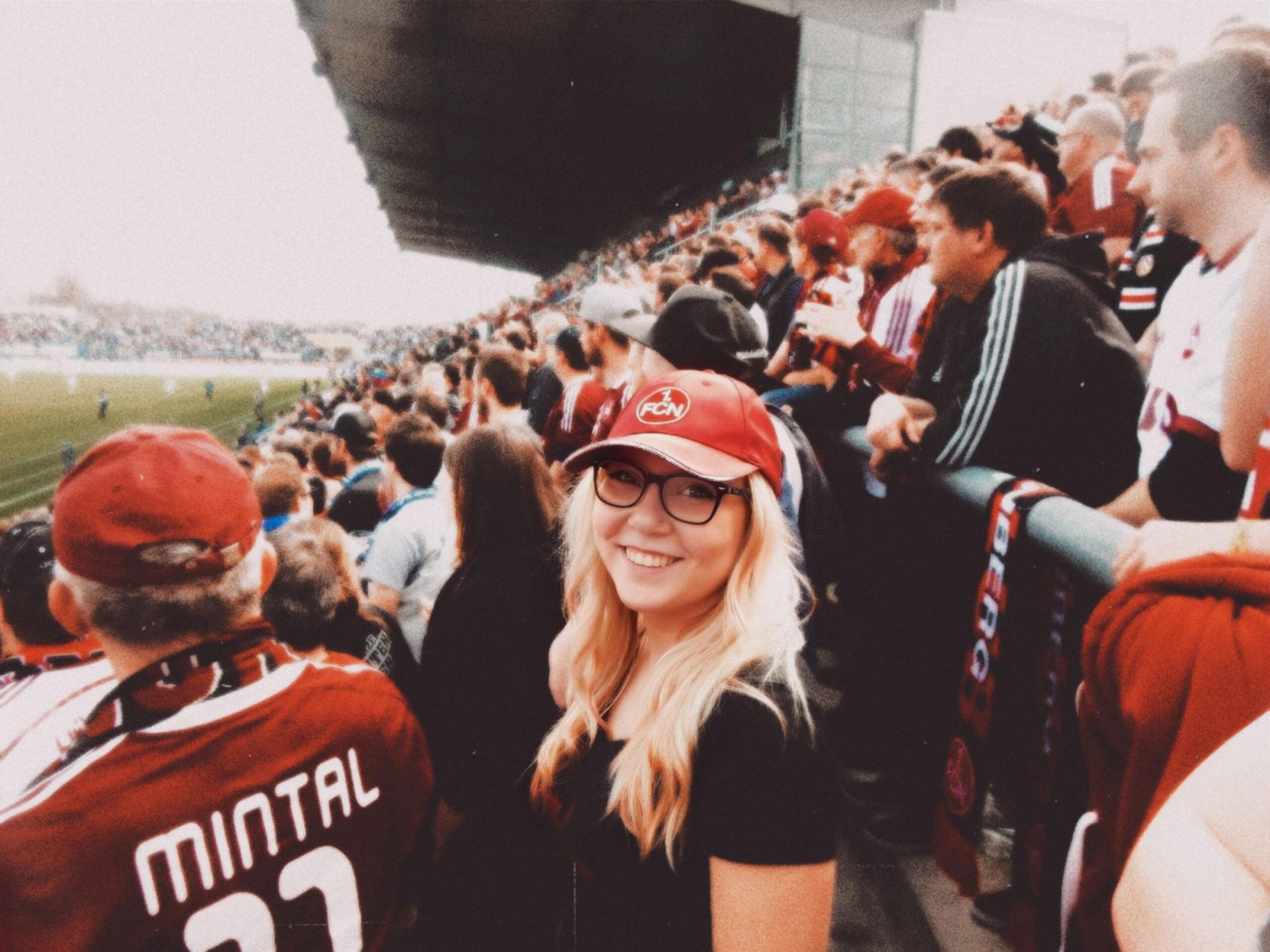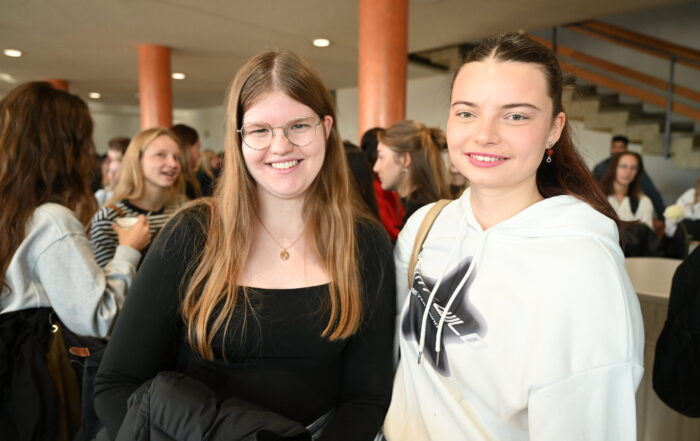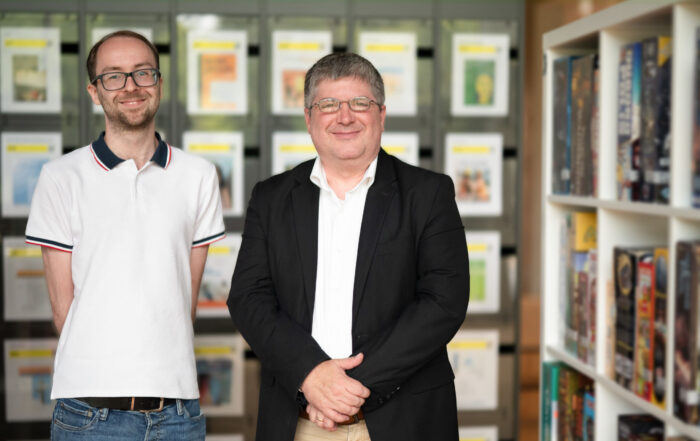13. July '20
The soccer season in Corona times has shown that professional sport needs new ideas.
Unexpected help has come from interior design.
Natascha Feulner has chosen a special topic for her bachelor’s thesis at Coburg University of Applied Sciences.
Her idea was a perfect place for clubbers.
Natascha Feulner has been a fan of 1. FC Nürnberg since she was a child.
And she’s from Fürth.
“It’s not so easy to find like-minded people.”
She laughs as she explains how she came up with the topic for her bachelor’s thesis at Coburg University of Applied Sciences.
“I wanted to design a place where everyone could meet, where events and discussions could take place or where there was space to prepare choreographies for the Nordkurve, for example.”
The name of this multifunctional Nuremberg fan community space was to be Franconian: das Gwerch.
A term for confusion, which at Feulner stands for the fact that everyone is welcome.
And because there are also clubbers outside of Nuremberg – for example in the Fürth or Coburg diaspora – there should also be opportunities for interactive, virtual fan communities.
The idea was born before corona.
Then came this season, in which matches were played in empty stadiums.
So that the clubs could keep their heads above water financially through TV broadcasting rights.
But the heart was missing.
Borussia Mönchengladbach defender Matthias Ginter put it in a nutshell in an interview with Deutschlandfunk: “It didn’t really have much to do with the Bundesliga. We’re all happy when there are spectators again.”
Cheers, sadness, tears?
Nothing.
No home advantage.
When the fans were unable to enter the stadium, it became clear just how much the fascination of soccer is actually about them.
“The 22 on the lawn are just a means to an end,” says Prof. Rudolf Schricker dryly.
He is supervising Feulner on her Bachelor’s thesis in interior design.
He himself is, as he says, “not a frenetic fan”, but is enthusiastic about soccer as a social space.
“For us in Coburg, interior design is not just about constructive or aesthetic-technical principles,” he explains.
“It’s about focusing on people and their needs.
That’s why we also use human science methods.”
The three categories of fans
Feulner conducted a survey for her work to find out what is important to fans.
There are those who are generally interested in sport.
They watch matches but have nothing to do with the stadium.
Ultra groups celebrate the topic in a completely different way: They are extremely attached to their club.
And somewhere in between are those who Natascha Feulner calls “08/15 stadium goers”.
The budding interior designer also counts herself among them.
All professions and ages are represented among the fans.
Grandparents, schoolchildren, men, women.
The question is: what do they need?
“The sense of community is important,” says the student.
“So I need something that triggers emotions. In principle, that’s first and foremost the game. When you sit in the stadium, you also perceive the emotions of others.”
Fan chants.
And counter-chants.
“There’s a stranger in the row in front of you who keeps jumping up and blocking your view: But then when a goal is scored, you cheer with him.
The stadiums are designed for this communal experience.
“How to convey that feeling without people being together – that’s a big task,” says the Bachelor student.
She designs the Gwerch as a concrete space for fans, their encounters and activities. She has also thought through various approaches to bring the live experience to the people. She talks about podcasts and vodcasts, video podcasts on topics requested by the fans. Why not stream fan chants live? “VR goggles also offer many possibilities: You can use them to sit in a virtual living room and watch Netflix in the Alps – even though you’re actually in Coburg.” Applied to soccer, this means: “The fans could sit in a virtual seat in the stadium and also animate the fans around them.” For something like this to work, people and their needs would also have to be at the forefront in such a virtual place. Professor Schricker is convinced that the design of virtual spaces will become a major topic in the future.







